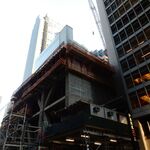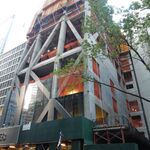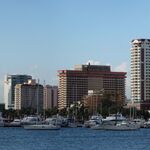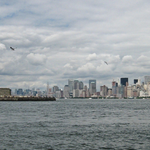Following three centuries of privateering, slave trading, and generally reigning terror up and down the coasts of Europe and the American, Spanish, and French colonies of North and South America, the port city of Algiers was conquered by France in 1830 bringing about 130 years of colonial rule, the legacy of which can be seen to this day. Under continuous French control from 1830 to 1962, the capital of French Algeria became the colonial Département, or seat of government, making Algiers the cultural heart and soul of the colony for more than a century. With a population of European ex-pats that eventually grew to become the majority among the city's elite, it was not long before the crooked streets and alleyways of medieval Algiers were re-imagined as grand boulevards and the city centre was transformed over several generations of European influence to become more in line with a Euro-centiric world view of art, architecture, religion, and culture. This edition of Cityscape will take an in-depth look at the architectural legacy left behind by 130 years of French rule and cultural influence, which has made Algiers today a wonderful patchwork of internationally informed styles from the 19th and 20th centuries.
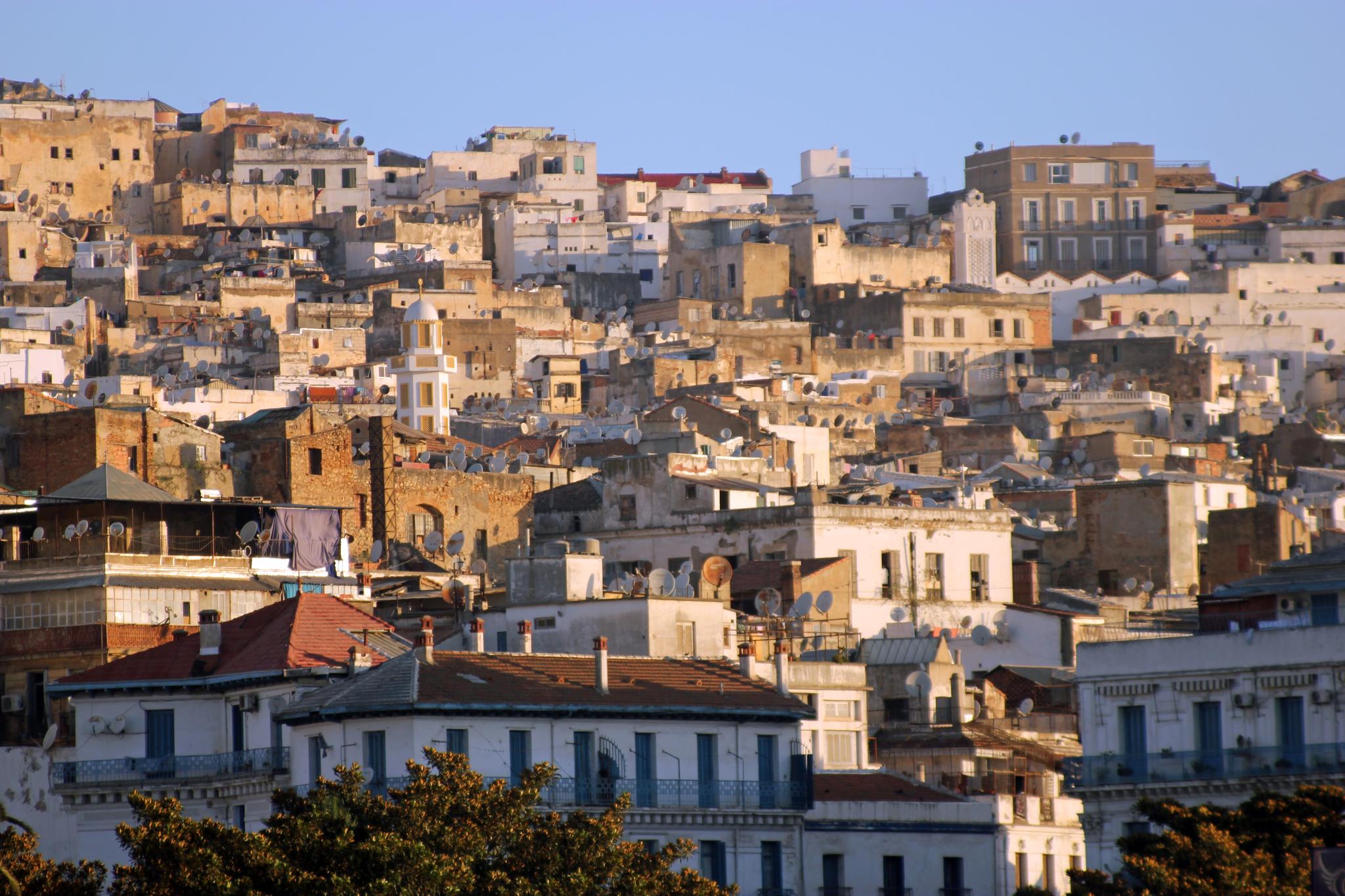 Algiers, urban mosaic, image by Flickr user Malcolm Bott via Creative Commons
Algiers, urban mosaic, image by Flickr user Malcolm Bott via Creative Commons
With historic roots that reach back to pre-Roman times, the Port of Algiers has been inhabited by a long list of conquering forces, including the Phoenicians, Romans, Berbers, Ottomans, French, and Algerians, to name but a few. Over the last 2000 years these groups have replaced one another in a succession of dynastic, colonial, and autonomous dominions which each in turn have wrought their influence upon the ancient city and its people.
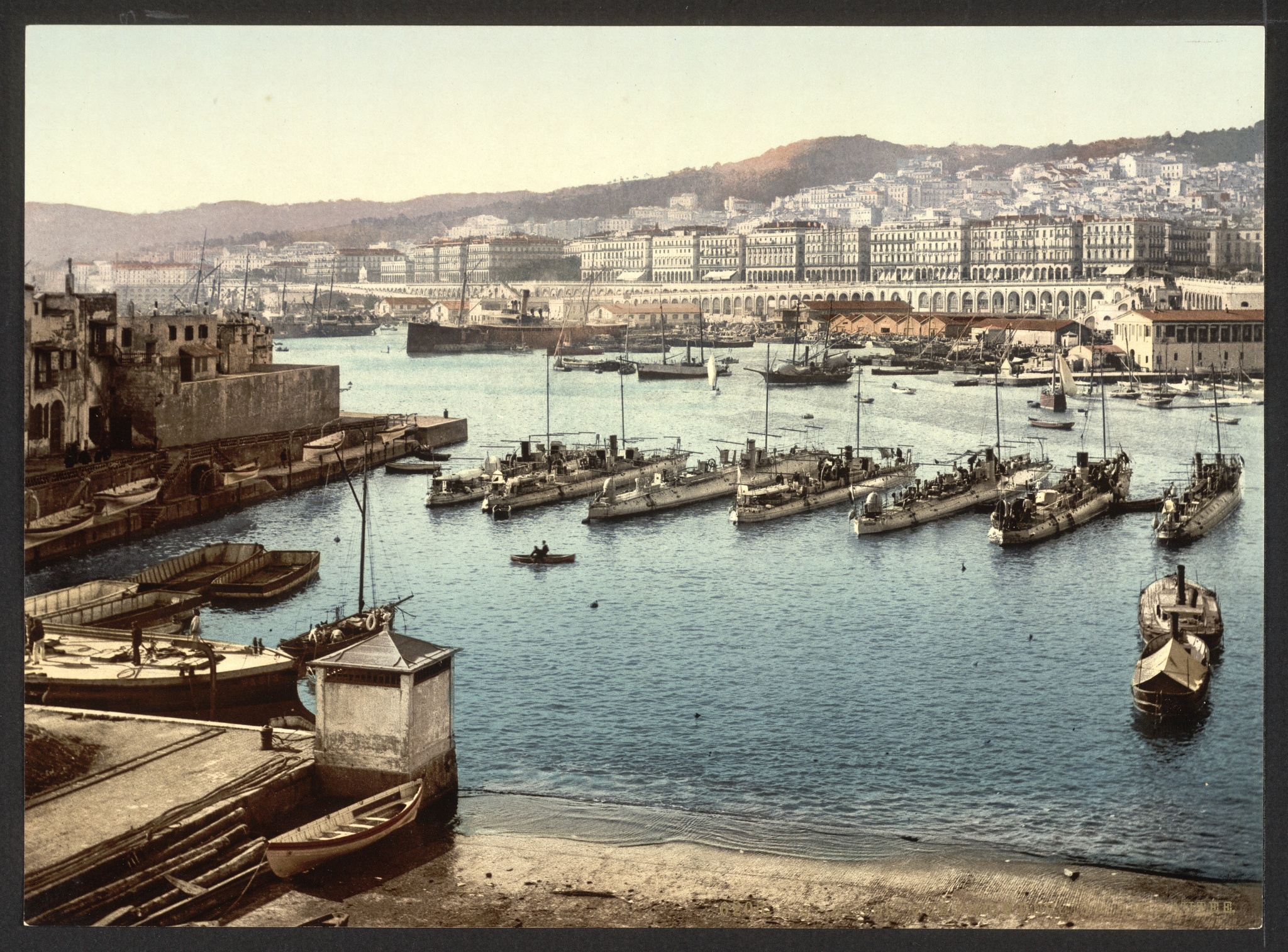 Port of Algiers, waterfront view, c. 1899, public domain archival image
Port of Algiers, waterfront view, c. 1899, public domain archival image
Following the devastation wrought upon Algiers during the First and Second Barbary Wars fought against the United States from 1801 to 1805 and again from 1815 to 1816, the centre of operations along the African Barbary Coast was in no condition to push back the French little over a decade later during the French conquest of Algeria in 1830. From that point forward it became a colony of France, and it was not long until the capital of French Algeria began to look the part.
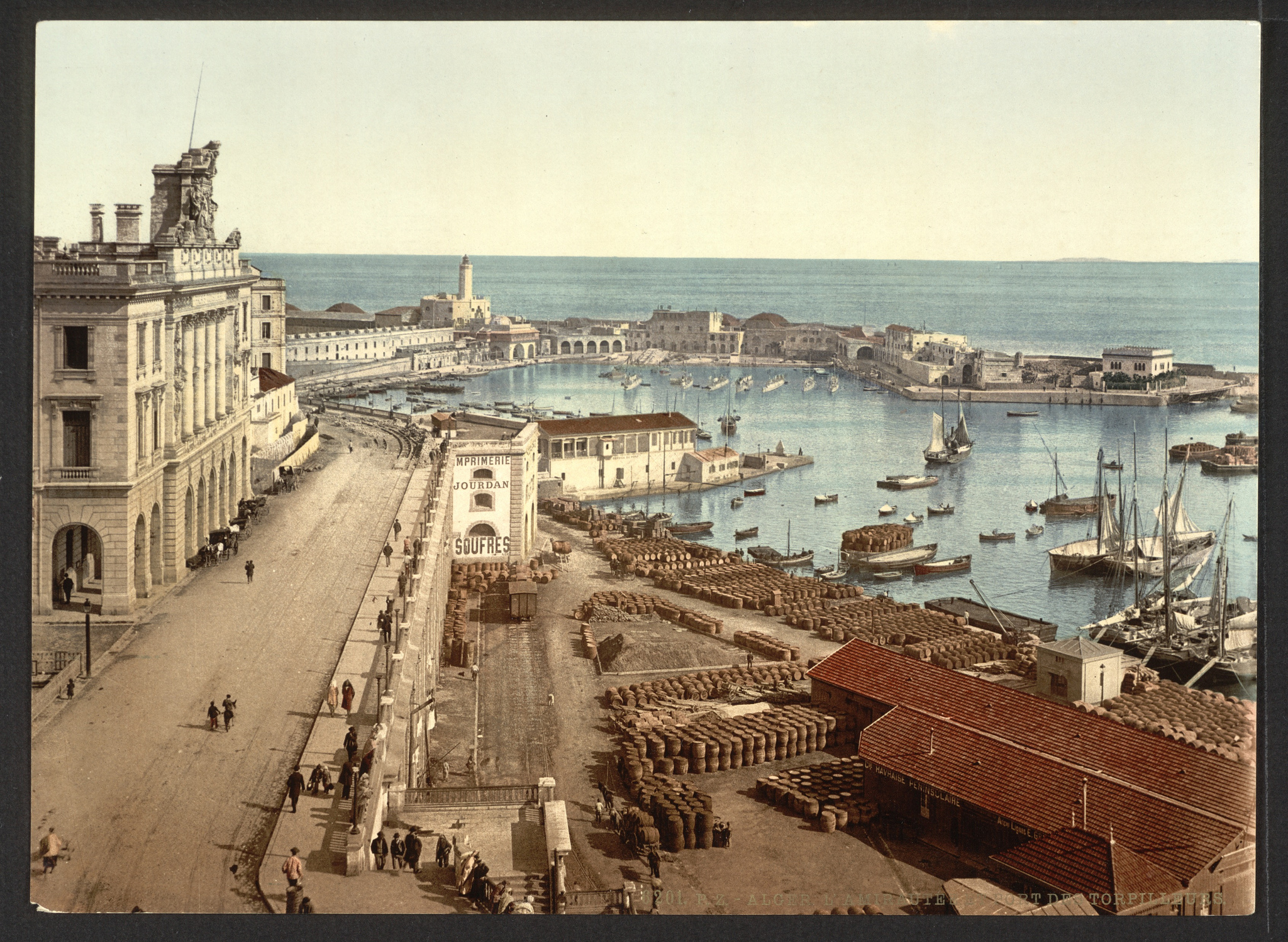 Port of Algiers, looking out to sea, c. 1899, public domain archival image
Port of Algiers, looking out to sea, c. 1899, public domain archival image
In a similar fashion to European colonies across the globe, Algiers soon became a shining example of the 'civilizing' efforts of local French colonizers and civil engineers, businessmen, and politicians, who made quick work of transforming the port city into a glorious tribute to the splendour of France. Beautifully elaborate Baroque, Rococo, and Neoclassical edifices were constructed first along the sprawling waterfront, announcing to visitors the wealth and cultural capital that the colony had come to represent, before heading further inland following the path of new boulevards and streets that were gradually punched through the ancient city's complex warren of narrow streets and alleys.
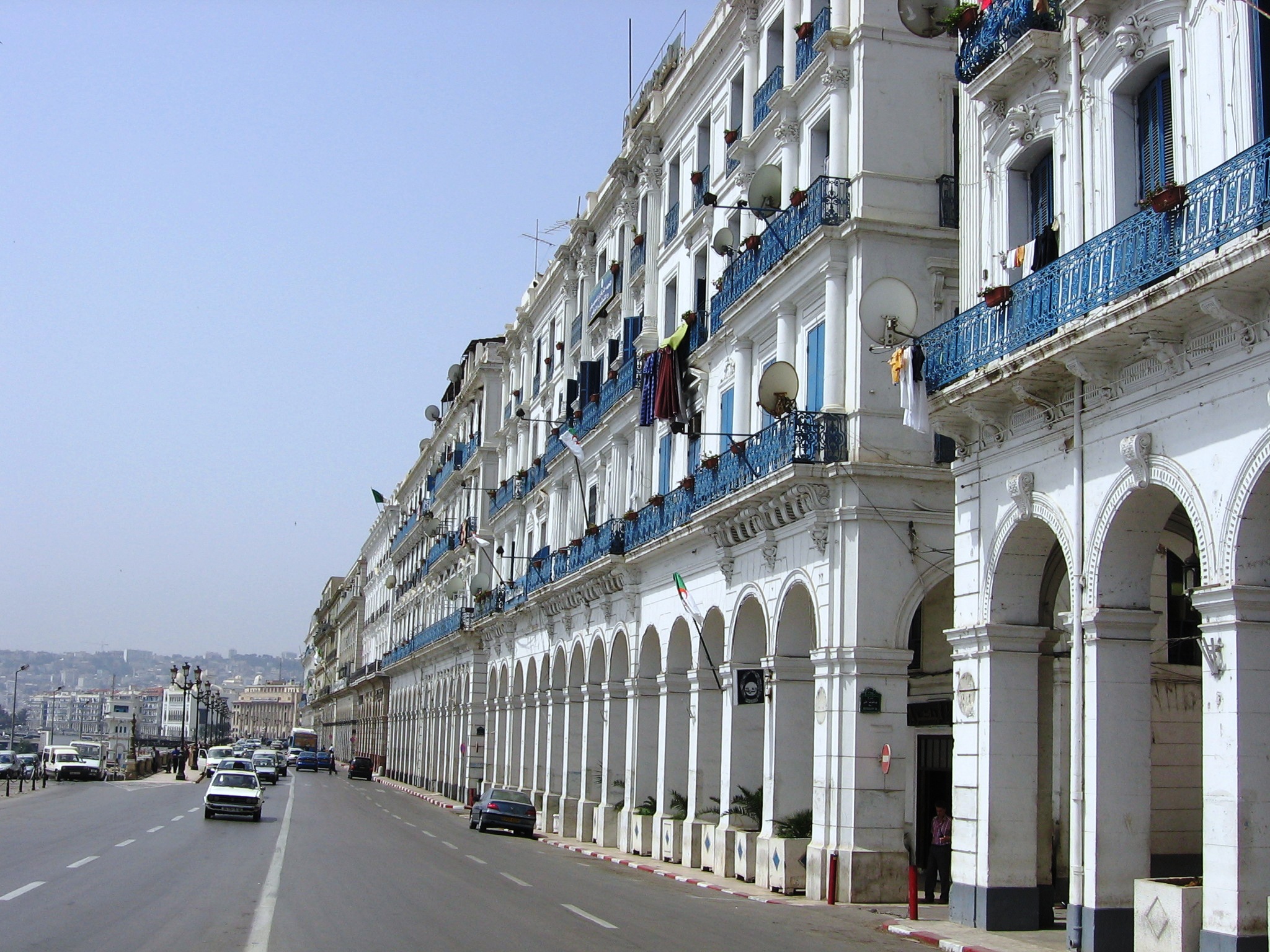 Che Guevara Boulevard, as viewed along the waterfront, image by Flickr user lionel.virolaud via Creative Commons
Che Guevara Boulevard, as viewed along the waterfront, image by Flickr user lionel.virolaud via Creative Commons
Viewed above, the post-revolution named Che Guevara Boulevard, formerly known as the Boulevard of the Republic, spans the length of the waterfront and is comprised of a long stretch of Second French Empire styled apartment blocks that are uniform in height and appearance, typical of the grand boulevards of Algiers and other French cities of this era both abroad and in France. Below, the former Consular Palace and current Chamber of Commerce sits grandly at the centre of the same boulevard, its impressive white facade nearly as spectacular today as it was at the time of construction in the mid-1800s.
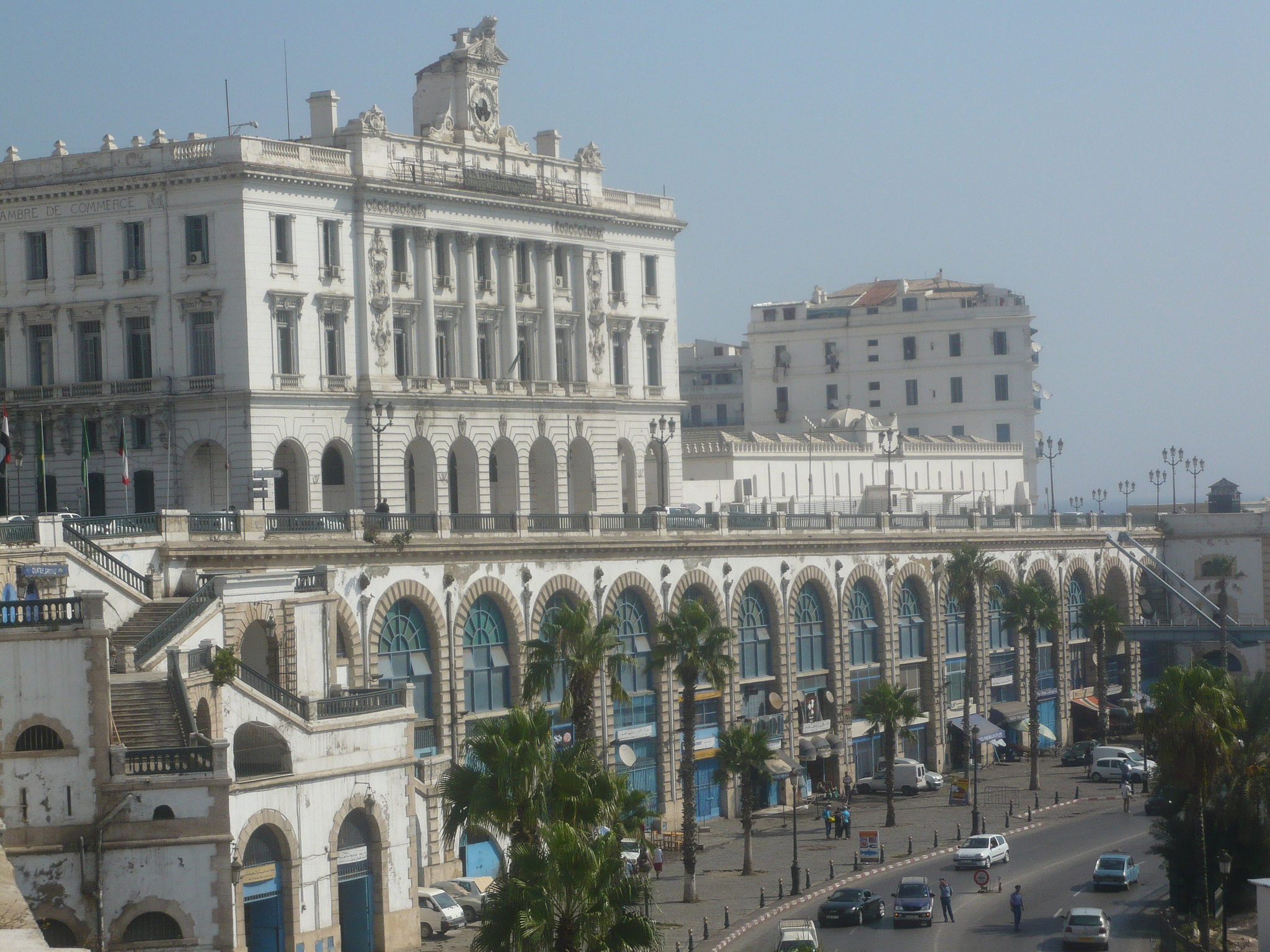 Chamber of Commerce (Consular Palace), image by Flickr user lionel.virolaud via Creative Commons
Chamber of Commerce (Consular Palace), image by Flickr user lionel.virolaud via Creative Commons
As the city grew, so did the rows upon rows of Parisian-style apartment blocks, which began to replace the more traditional homes of the Berbers and Arabs who had called the ancient port city home for centuries. Adapting to the medieval street grid (or lack thereof), the new apartment blocks, built in a mishmash of styles depending on the era of construction, and ranging roughly from late Baroque, to Art Nouveau, today give central Algiers a strong European flavour, albeit one which has not suffered the same pattern of neglect that has become typical of similar streetscapes found within former colonies in South America and elsewhere.
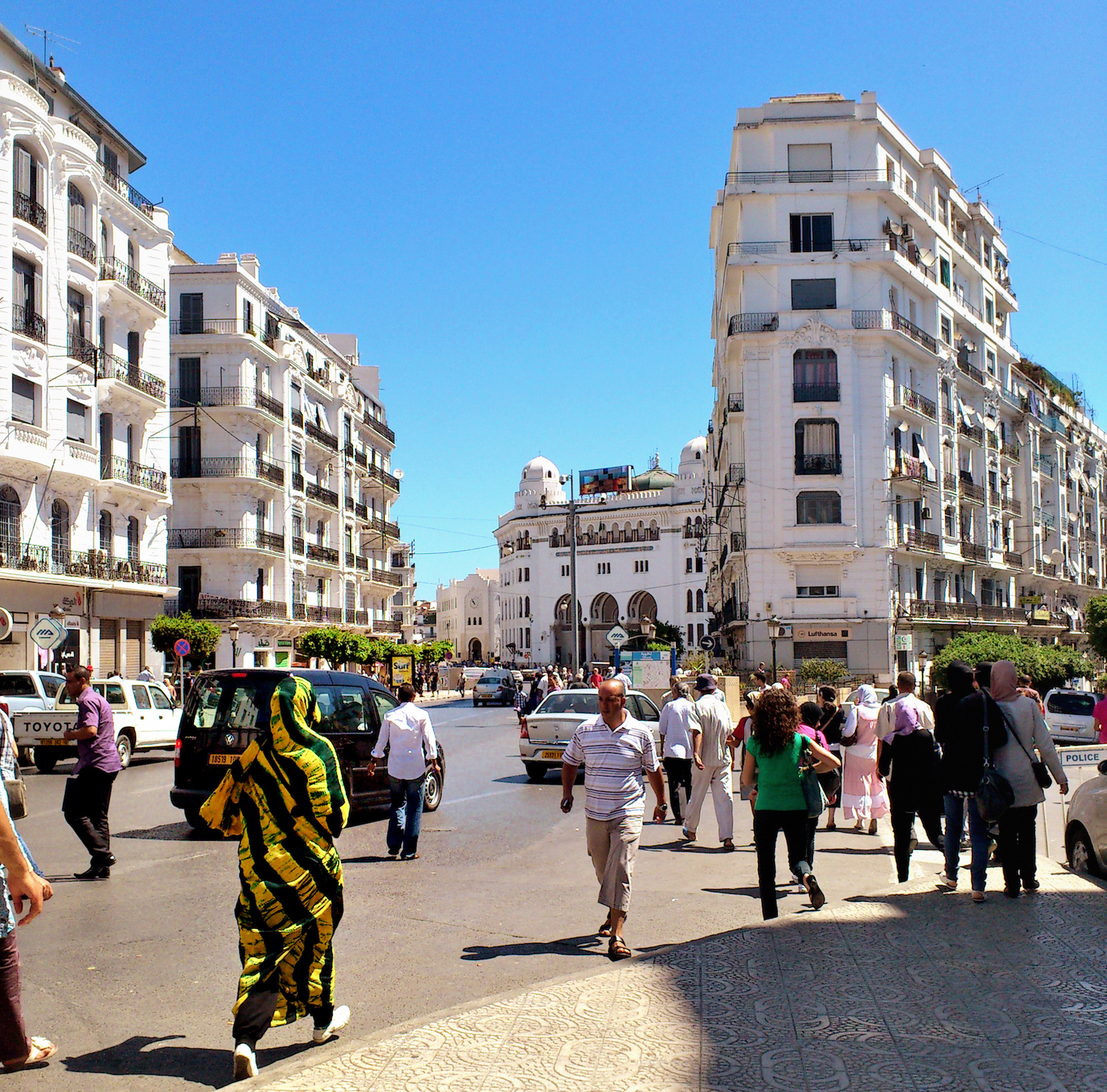 Colonial-Era apartment blocks in central Algiers, image by Flickr user OMAR-DZ via Creative Commons
Colonial-Era apartment blocks in central Algiers, image by Flickr user OMAR-DZ via Creative Commons
Thoroughly cosmopolitan, the modern city of 3.5 million has its share of world class cultural attractions, restaurants, hotels, and resorts, with a city centre that is well served by public transit, including commuter rail, a subway, and a tramway, the latter two services dating to just 2011. A popular destination for lovers of architectural history, Algiers exists as a fantastic example of colonial architecture, its urban fabric largely unaltered by the passage of time.
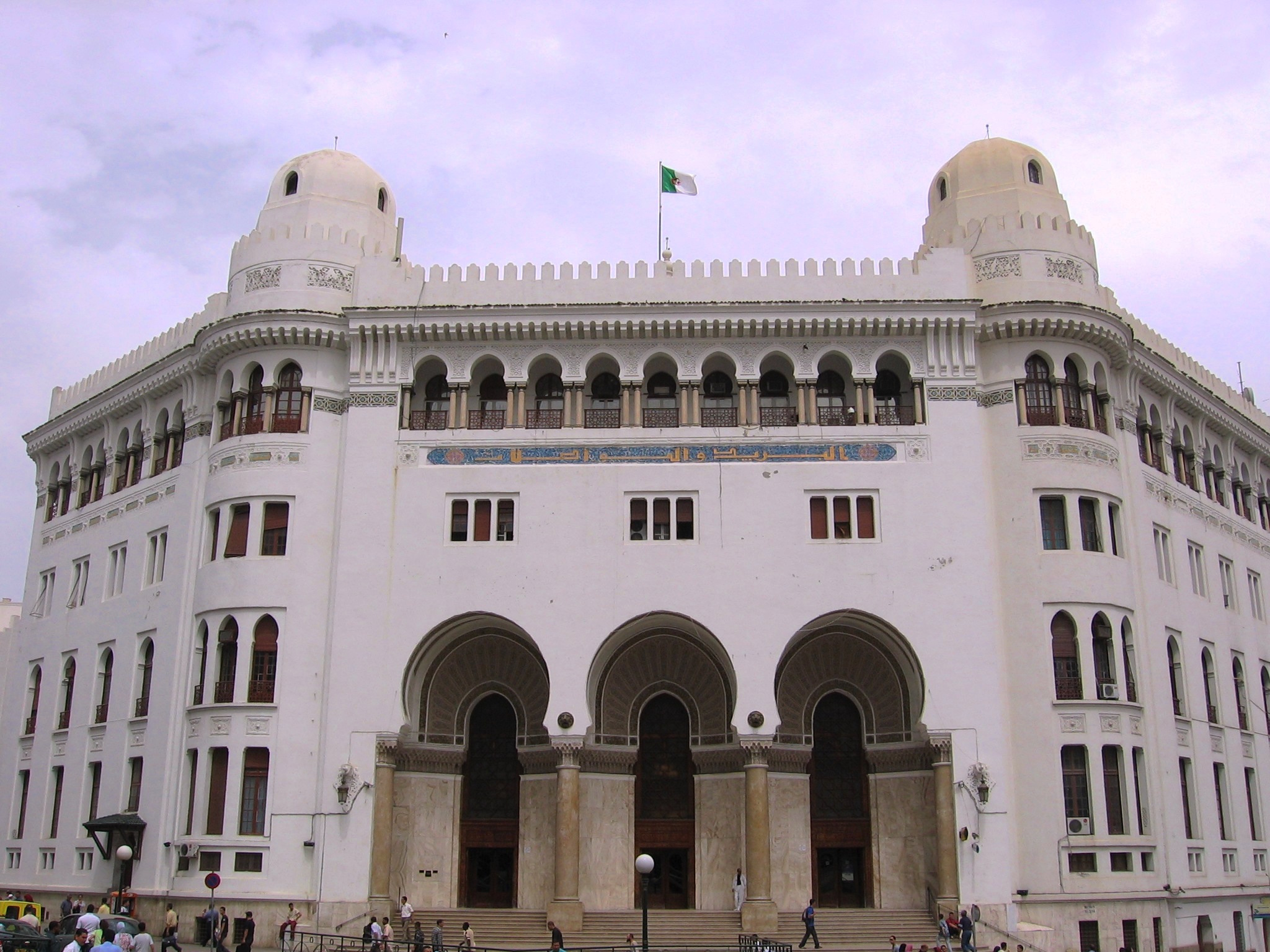 Grand Post Office, Algiers, image by Flickr user lionel.virolaud via Creative Commons
Grand Post Office, Algiers, image by Flickr user lionel.virolaud via Creative Commons
Viewed above, the Grand Post Office, built at the start of the 20th century in the Moorish style then en vogue in Algiers and the rest of the Barbary Coast, is notable for its departure from French architectural influence. The more overtly 'nativist' style of the structure is in keeping with the trends of the day. A favourite of visitors and urban explorers, the oft-photographed structure easily ranks among the city's most well-known beloved structures from the Colonial Era. Below, continuing in the same architectural vein, albeit employing a more pronounced, Neo-Byzantine style, the 1872-built Notre Dame d'Afrique, which features an inscription calling for prayers for Christians and Muslims alike, is yet another fan favourite among visiting tourists and photographers.
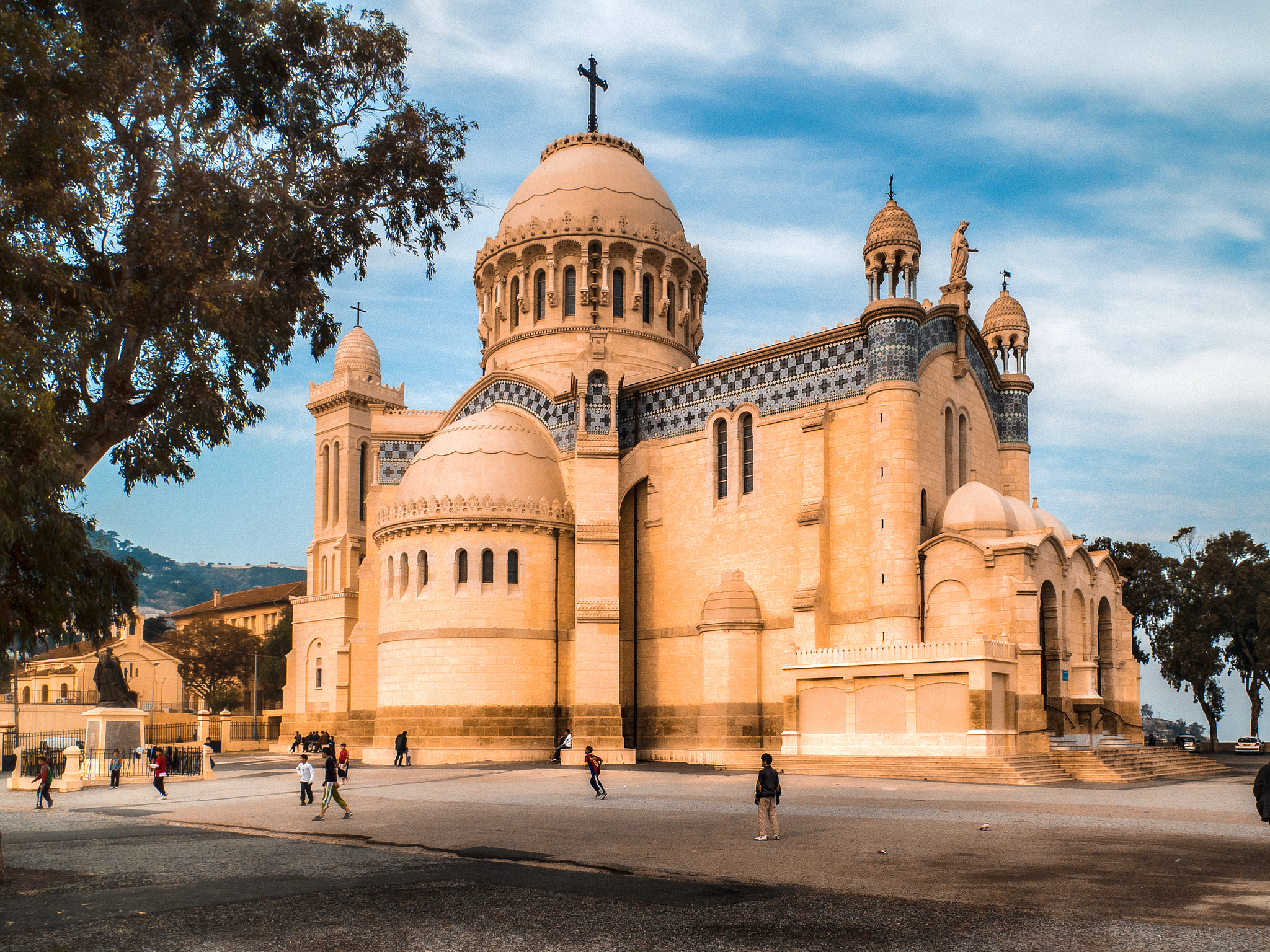 Notre Dame d'Afrique, Algiers, image by Flickr user Jason Pitcher via Creative Commons
Notre Dame d'Afrique, Algiers, image by Flickr user Jason Pitcher via Creative Commons
Moving into the 20th century, architectural development within Algiers began to stagnate, and the coming of war in 1914 slowed progress within France's far-flung colonies. The fall of France in 1940 during WWII, during which Algiers was the last territory to be taken by the Germans, served once again to bring urban growth and development to a standstill. Despite this prolonged period of relative stagnation and decline, there was a brief shining moment in the the early 1930s when the French government reached out to famed architect, city-builder, and father of modern urbanism, Le Corbusier, who reportedly held the aging port city and its crumbling edifices in low regard.
 Le Corbusier's vision for a re-imagined Algiers, c. 1931, public domain archival image
Le Corbusier's vision for a re-imagined Algiers, c. 1931, public domain archival image
While the visionary architect's grand plan for a re-rimagined Algiers did not come to fruition, halted by the outbreak of the Second World War, most today do not see this as a loss. The retention of Algiers' impressive collection of Colonial-Era French architecture is today a major tourist draw and source of civic pride among many. While lacking the cachet of Casablanca, Tangiers, or Tripoli, Algiers has in recent years come into its own as an international tourist destination, and its sprawling beaches are lined with luxury hotels and resorts.
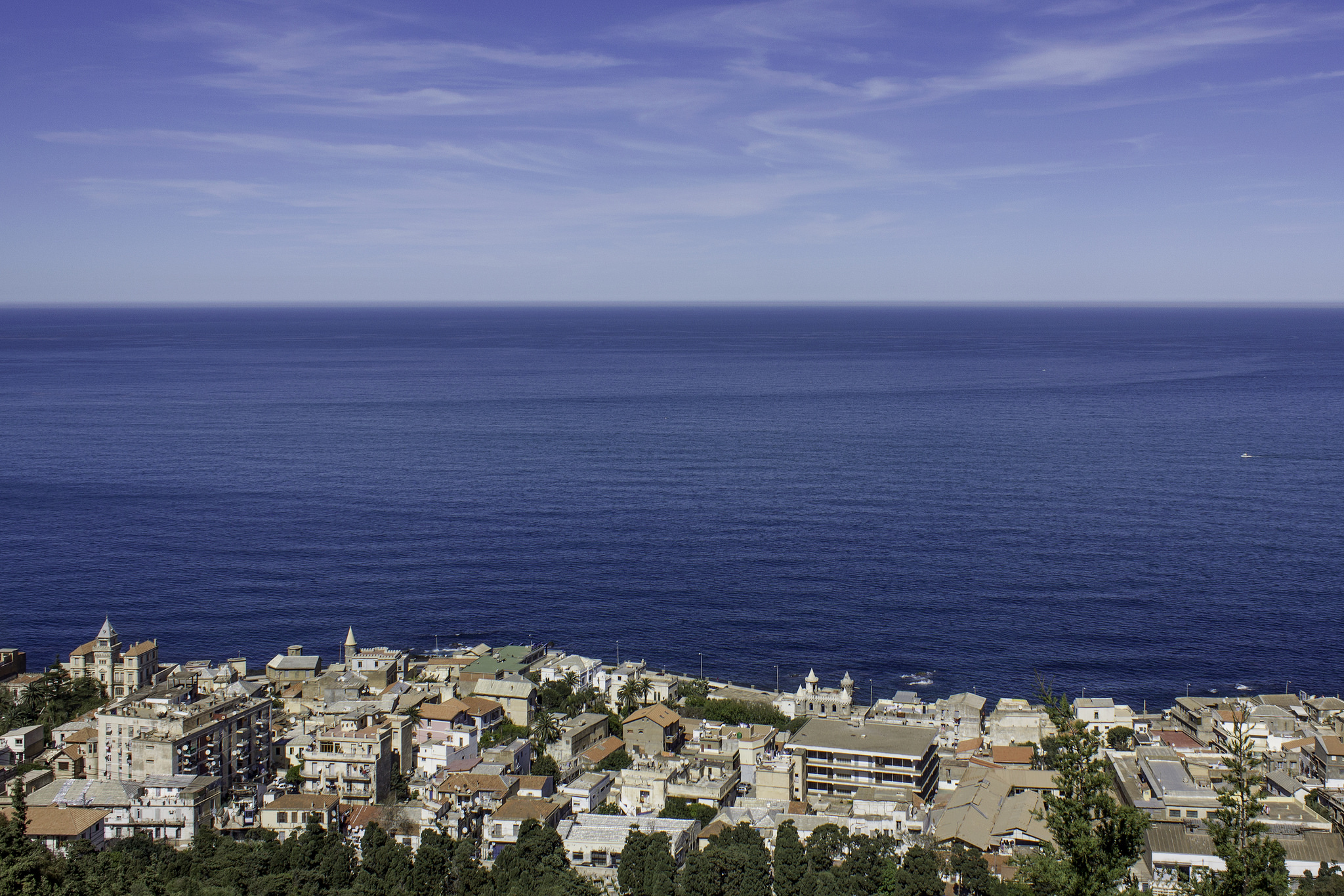 Algiers, looking out towards the sea, image by Flickr user The Algerian via Creative Commons
Algiers, looking out towards the sea, image by Flickr user The Algerian via Creative Commons
Today a bustling metropolis, the long history of Algiers has served to imprint the visions of several different cultures, religions, and eras upon the ancient port city, its architectural heritage a living tribute to our shared human past. Long known as the crossroads of the world, the Barbary Coast has been witness to nearly every major conflict and subsequent peacetime, though the region today is just as prone to political tumult as it ever was.
Cityscape will return soon with a new installment, and in the meantime, SkyriseCities welcomes new suggestions for additional cities and styles to cover in the weeks to come. Got an idea for the next issue? Let us know!

 5.4K
5.4K 


















